Facelets will by default only remove it from compositions (include files and composite components) and tag files. It won't remove it from the master template. Just remove it yourself. You shouldn't be using the XML prolog at all when authoring HTML.
Whether the XML prolog will be removed from the master template is specified in appendix 1.1.1.1 of JSF 2.2 specification which describes the configuration of <facelets-processing> element in faces-config.xml. The XML prolog is described as "processing instructions". In the table, you'll see that it is only removed (consumed) when the template is processed as a XML or JSPX view.
1.1.1.1 The facelets-processing element
The <facelets-processing> element is used to affect the processing of Facelets VDL files. Therefore, this setting
only applies to those requests that reach the Facelets ViewDeclarationLanguage implementation, as specified to
the runtime via the javax.faces.FACELETS_VIEW_MAPPINGS and javax.faces.DEFAULT_SUFFIX
<context-param> entries. The specification defines three processing modes for Facelets files: Facelets XHTML
syntax, XML View syntax, and Facelets JSPX syntax. This last syntax is intended to ease the migration to Facelets for
applications already using the JSP document syntax (also known as JSPX syntax). The affect on the processing of files
in each of these three modes is specified in the following table.
Valid <process-as> values and their implications on the processing of Facelets.
-----------------------------------------------------------------------------------------
<process-as> <process-as> <process-as> <process-as>
html5</process-as> xhtml</process-as> xml</process-as> jspx</process-as>
HTML 5 (default) Facelets XHTML XML View Facelets JSPX
-----------------------------------------------------------------------------------------
XML Doctype Simplified to passed through consumed consumed
<!DOCTYPE html>
XML passed through passed through consumed consumed
declaration
Processing passed through passed through consumed consumed
instructions
CDATA passed through passed through consumed consumed
section
Escaping of escaped escaped escaped not escaped
inline text
XML passed through passed through consumed consumed
Comments
In the preceding table, “passed through” means that the content is passed through unmodified to the user agent.
“consumed” means the content is silently consumed on the server. Note that for CDATA sections, the content of the
CDATA section itself is passed through, even if the start and end tags should be consumed. “escaped” means that
sensivite content in the response is automatically escaped: & becomes &, for example. “not escaped” means that
such content is not escaped.
In other words, when you're authoring HTML5/XHTML, you have to remove it yourself. A better wording is actually: you shouldn't be including the XML prolog yourself in HTML5 and XHTML pages as that's not required; it's only required in XML and JSPX pages (and thus Facelets will automatically remove it).
See also:
Unrelated to the concrete problem, you should be using <h:outputStylesheet> instead of <link rel="stylesheet"> to be independent from the request URL.
<h:outputStylesheet name="css/default.css" />
<h:outputStylesheet name="css/cssLayout.css" />
See also:
